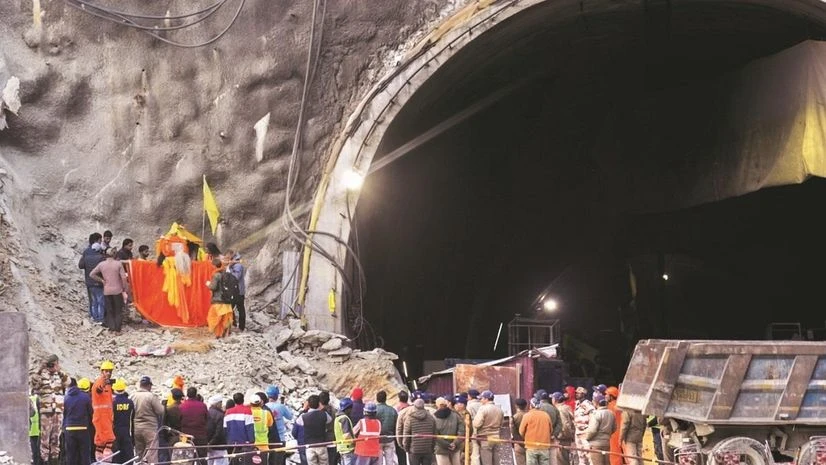The geological report prepared before the commencement of the Silkyara-Barkot tunnel project showed that the rock classification of the tunnel's alignment ranges from poor to very good, the government said on Wednesday.
A total of 41 workers were trapped after a portion of the under construction tunnel collapsed on November 12 and the workers were rescued on November 28.
"The rock classification as per Geological report submitted by the Detailed Project Report (DPR) Consultant w.r.t. Silkyara Barkot tunnel alignment (length 4,531 m) ranges from Poor (Class IV) to Very Good (Class I)," Union Road Transport and Highways Minister Nitin Gadkari said in a written reply to Rajya Sabha.
The minister was responding to a query seeking details of the geological report submitted to the government before the commencement of the tunnel.
According to Gadkari, the rock classification reported by the EPC Contractor during execution ranges from "Very Poor (Class V) to Fair (Class-III)".
Also Read
"To overcome the problem of weak rocks during tunnel construction, additional support such as shotcrete, fore poling, rock bolts, steel ribs, lattice girder, etc have been provided," he said.
The response was to a question on the safety measures and steps taken to overcome the problem of weak rocks in the construction of the tunnel including providing extra support to the identified loose part of the mountain.
The queries were asked by Rajya Sabha member and Congress President Mallikarjun Kharge.
The National Highways and Infrastructure Development Corporation Ltd (NHIDCL) is constructing the Silkyara-Barkot tunnel through Hyderabad-based Navayuga Engineering Company Ltd.
The tunnel is a single-tube tunnel divided into two inter-connected corridors by a partition wall. Each inter-connector corridor can work as an escape passage for the other.
The 4.5 kilometre-long tunnel project in Uttarakhand, which is part of the centre's 900 kilometre-Char Dham Yatra All Weather Road, aims to improve connectivity to the four pilgrimage sites.
In a separate written reply, Gadkari said the road ministry is primarily responsible for development and maintenance of National Highways (NHs).
"Accordingly, average annual budgetary allocation of the ministry has increased by more than 940 per cent from about Rs 25,872 crore/year during 2009-14 to about Rs 2,70,435 crore during 2023-24," he said.
According to him, the length of 4-lane plus NH network including high speed corridors has increased by more than 250 per cent from about 18,371 km in March 2014 to about 46,179 km so far.
Also, length of less than 2 lane NHs has decreased from about 27,517 km in March 2014 to about 14,870 km, which is now only about 10 per cent of the network, he added.
(Only the headline and picture of this report may have been reworked by the Business Standard staff; the rest of the content is auto-generated from a syndicated feed.)

)
